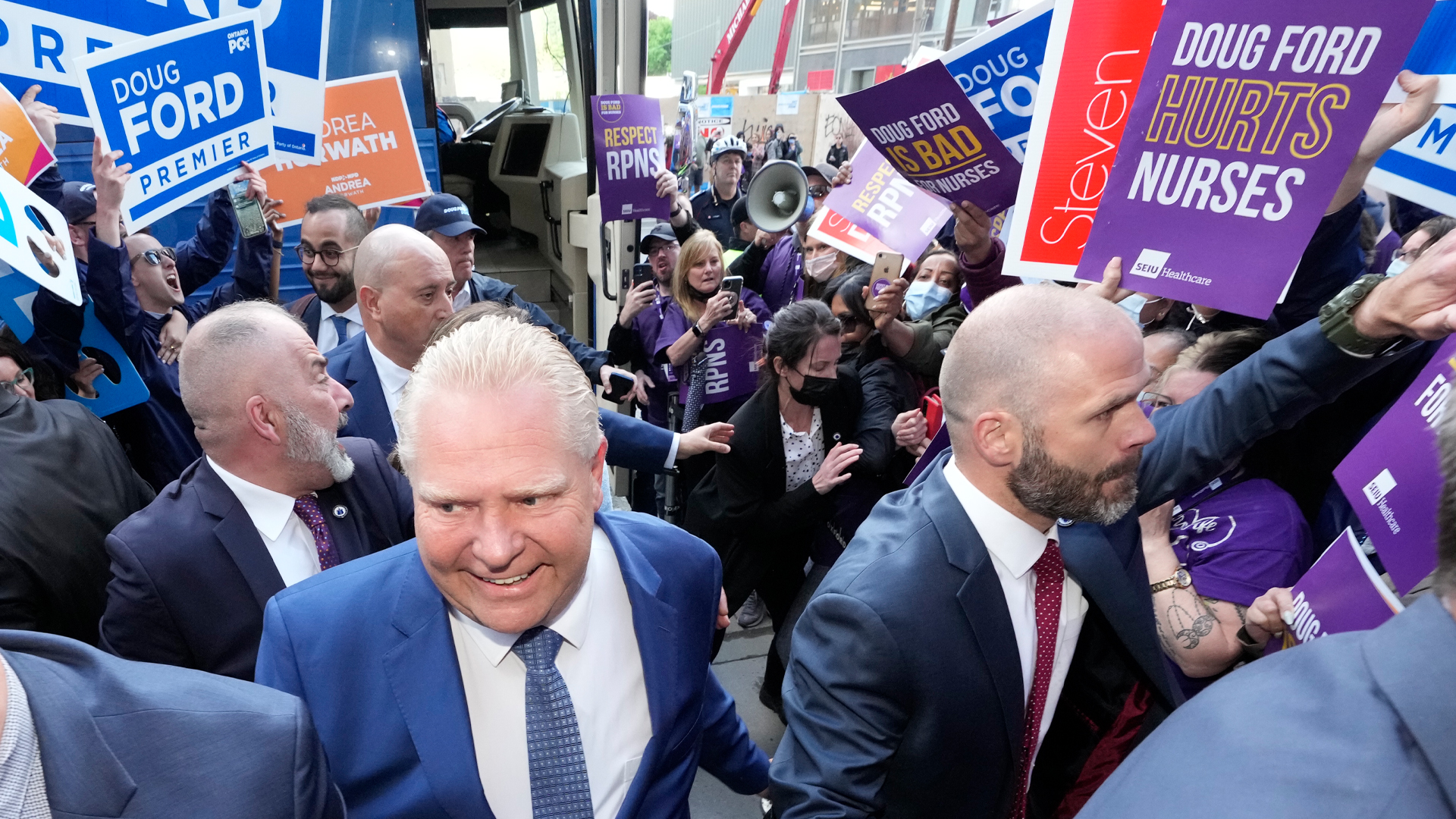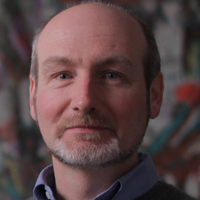
As the June 2 Ontario provincial election approaches, political observers are presented with a confusing landscape. With more than two-thirds of Ontario voters indicating a strong or moderate desire for a change in government and widespread dissatisfaction with its management of the COVID-19 pandemic, the Ford government would seem to be at serious risk of being replaced. So far, however, polls show Doug Ford’s Progressive Conservatives seem poised to retain power.
Ford was first elected four years ago on a platform focused on cutting red tape, taxes and hydro rates. The widespread responses required by the pandemic might have been expected to blunt the appeal of this limited vision of the role of the province’s government. Indeed, when polled about budget deficits resulting from COVID spending, a resounding 82 per cent of Ontarians preferred running deficits to cutting services and 71 per cent preferred greater deficits to cutting public service jobs.
A more inward-looking Ontario emerges under Ford
Will Doug Ford’s promises exacerbate Ontario’s problems?
Will the Ford era lead to a political realignment in Ontario?
As recently as January 2022, improving and expanding health care was ranked as the most important priority for the province, ahead of stimulating the economy and at double the rate of reducing taxes or reducing the deficit. Yet the themes of keeping consumer costs low and cutting red tape remain central to the government’s so-far apparently successful re-election bid.
All of this requires some sort of explanation. How is it that Ford’s Conservatives, in early polling, seem to be on the road to victory when their public policies are at odds with the priorities of Ontarians or the policy lessons from the pandemic?
The answer, at least in part, is the Ford government’s rhetorical ability to explain the challenges of COVID-19 and other developments. Ford has also been helped by the inability of the opposition to provide a compelling counter-narrative – one that moves beyond the managerial approach emphasizing balance among competing interests and agendas. That model, employed by both preceding Liberal premiers, stressed administrative competence and moderation as primary political values. This was quite decisively displaced by Ford in 2018.
Historical and economic context is important to understanding Ford’s political durability. During the past 50 years Ontario’s economy has undergone major structural changes, characterized as a shift away from manufacturing to service and knowledge-based economic activities.
Ontario’s experience of this transition has been far more positive than its “rust belt” neighbours on the south side of the Great Lakes. While those states have suffered dramatic declines in economic activity and population, Ontario’s overall trajectories remained fundamentally positive.
Examined more closely, however, the province’s economic transition has been less smooth. Rather, it has involved a high degree of polarization among employment types and income in the growing service sector. This polarization has featured the simultaneous creation of high-paid professional and managerial employment at the upper end of the labour market. But the bottom end is increasingly defined by precarious and low-paid personal service jobs. There has been little or no new mid-skilled job-creation in between.
The economic transition has also been geographically uneven. Growth in service-sector employment has been heavily concentrated in the Greater Toronto Area (GTA) and to a lesser extent around Ottawa. Regions of the province traditionally associated with manufacturing, particularly in southwestern and central Ontario and the Niagara Peninsula, have been increasingly left behind.
The impact of these dynamics could be seen in the outcome of the 2014 election. Then, the winning Liberal vote was concentrated in the relatively prosperous urban GTA. Declining urban communities moved toward the NDP and rural central Ontario remained the Progressive Conservative base.
Since then, the geographic divisions have become even more pronounced, with “the hyper-concentration of knowledge-based activities in and around downtown Toronto” and a relative decline in the suburban 905 region surrounding the city. That region would provide a core of the “Ford nation” constituency that propelled the Progressive Conservatives into government in 2018.
In effect, Ford succeeded with a populist appeal to the “real Ontarians” on the losing end of the transition, who considered themselves under-served and over-taxed by the previous Liberal government.
In the 2018 election campaign and throughout his tenure, Premier Ford has employed what might be understood as a “market populist” appeal. This approach reframes in populist terms traditionally neo-liberal economic goals such as a reduction in the size of the state and deregulation of the economy. These are then branded as what “real Ontarians” want.
Slogans such as “open for business” and “respecting taxpayers” suggest a direct connection between policies that favour minimal government interference and personal economic prosperity. They imply that anything beyond minimal government action is incompatible with respect for voters – something the Liberal governments failed to show.
The Ford government retained this posture through the COVID crisis but adapted it slightly to accommodate the increased governmental action necessitated by public health orders. The easing of restrictions framed as a requirement for economic prosperity has seemingly been this government’s central directive in decision-making – “reopening for business” became the primary goal. Public health restrictions may be necessary to sustain economic prosperity in the long term but are ultimately subordinate to the economy.
To this theme the government has added a new form of post-pandemic activism. This has focused on further cutting red tape and increased spending to “get it done” in terms of housing, highway and transit construction. Whether the projects being “done,” such as the 413 Highway, actually make sense is a secondary question. At the same time, a focus on short-term affordability through moves such as a promised gas-tax cut and the removal of road tolls and vehicle licensing fees plays well to public concerns over rising living costs.
Mounting effective responses to these narratives presents significant challenges for the province’s opposition parties. Throughout most of the pandemic period, both the NDP and the Liberals focused heavily on how they would have managed things better, but operating within the parameters of debate set by the Ford government. To this, they have added attempts to top Ford’s populist appeals to affordability.
So far, only the Green Party seems to be presenting a conceptually different model in its plan for a green recovery. It addresses the fact that “the path we were on was not sustainable or just” and that sustainability (environmental, economic and social) could be an alternative basis for governance. But the chances of the Ontario Greens forming a government after June 2nd are remote.
The environment and climate change remain key points of vulnerability for the Ford government, particularly in the sense that they speak to his government’s reactive policy style and lack of forward vision. The question of who actually wins under Ford’s form of “market populism” must also loom large. “The people” or certain well-connected interests: developers, resource industries, incumbents in the energy and for-profit long-term care sectors?
But if the NDP and Liberals hope to unseat Ford, they need to develop a framing that proposes more than beating Ford at his own game. Rather, they must focus on how they would address the geographically, socially and politically polarizing model that has come to define large segments of the Ontario economy. They also need to deliver that vision with greater energy and charisma than they have shown.











